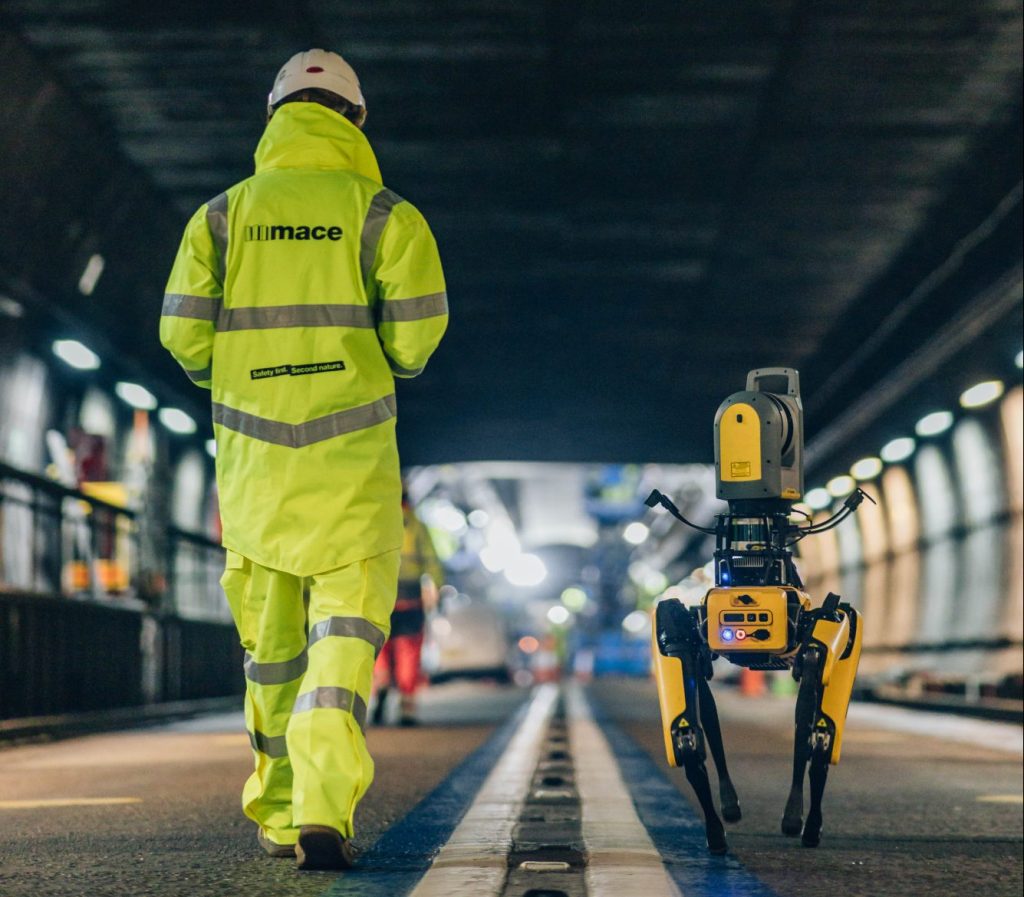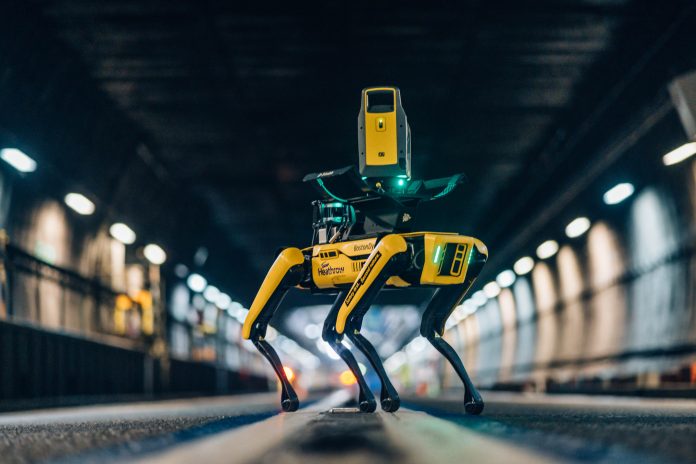At the cutting edge of technology, robotics are increasingly being used to increase efficiency and reduce risk for workforces across a wide variety of industries. For those in the built environment sector, the safety of every person who sets foot on a project site is the top priority
Our industry can begin to change for the better through the development and adoption of innovative technologies, which can mitigate some of the unique challenges and risks our workforce faces on a daily basis.
Robot technology and robotic animals provide the greatest benefit for the sector when construction is taking place on hazardous or unknown terrain. By taking a human colleague out of a high-risk area, we are ensuring their safety, health and well-being.
Robots can make sites safer for our colleagues, and crucially, they have the potential to make sites much more productive. This increased productivity results in increased build volume and reduced capacity constraints.
Meet Dave
Alongside our clients at Heathrow Airport, Mace has adopted a robot dog.
Affectionately given the nickname Dave by the project team, the Boston Dynamics Spot the Dog provides 3D laser scans of the cargo tunnel, which is currently undergoing refurbishment to keep in line with new regulations.
Dave is equipped with Trimble X7 scanner, and operatives can set up missions within the device’s internal computer, allowing it to walk around and complete scanning the site without supervision. Once a mission is complete, Dave will retreat to the dock and upload the data captured.
On the modern construction site, data is king. This new way of working means the data that is retrieved can be reconciled with a 3D model of the site and then used to track accuracy and progress on the project.
The future workforce for the industry
Everywhere you look in modern life, there is more and more automation occurring, and whether we like it or not, robotics and AI are developing at pace. This has left many wondering what the future workforce of many industries will look like. The truth is robots will never replace people on construction sites. However, the skillset of the industry will need to evolve and grow.
Robots can be used to successfully reduce risk to the workforce and improve efficiency across construction projects, making sites a safer and more pleasant environment to work in. Ultimately, they will help make our industry more attractive.
There will also be exciting new roles available. For every robot deployed on-site, an operator will be required. In the case of Dave, while it is able to autonomously perform a mission – the mission needs to be inputted in the first place.
For the future workforce, the adoption of robotics will mean a safe and productive industry with colleagues with different skills and different mindsets.

Where to next?
Robotic animals, such as Dave the Dog, show how the development of augmented reality technology has the potential to improve the safety and delivery of projects.
With the use of this type of technology expected to rapidly scale up to include automated fabrication, robotic welding and material handling on building sites, the future of construction sites could look vastly different – and will require the scaling up of new digital skills within the workforce.
As an industry, we know we must continually improve our risk management, reporting, training and activity management. We can do this by utilising data to lead the direction of travel. To keep the industry moving forward, we are actively seeking opportunities for improvement and building a learning culture.
Construction delivery can be sped up when up-to-date data is used to improve workflow and offsite prefabrication.
Heathrow’s cargo tunnel is one of the first construction sites to implement this technology in the UK. If deemed a success, the implementation of robotics technology may increase, not only at Heathrow but also on our more traditional construction sites. This can only be a good thing for the sector, helping to drive improvements in safety, quality and productivity.
With modern technology ever-evolving, it is hard to know exactly what the future construction site will look like. But, if the most modern of current project sites are anything to go by – a Jurassic Park-like collection of robotic animals, flying drones and workers in high-vis may not be as far-fetched as it may seem.
Nigel Cole
Managing director – aviation
Mace Construct
construction.enquiries@macegroup.com

















